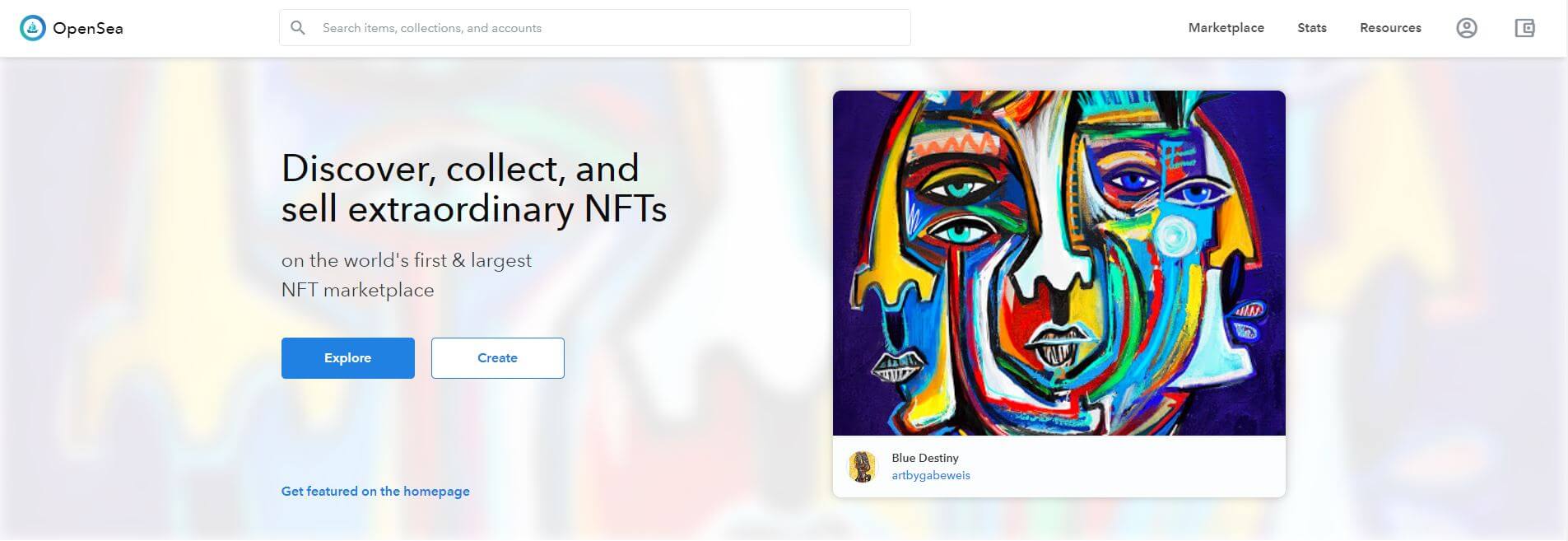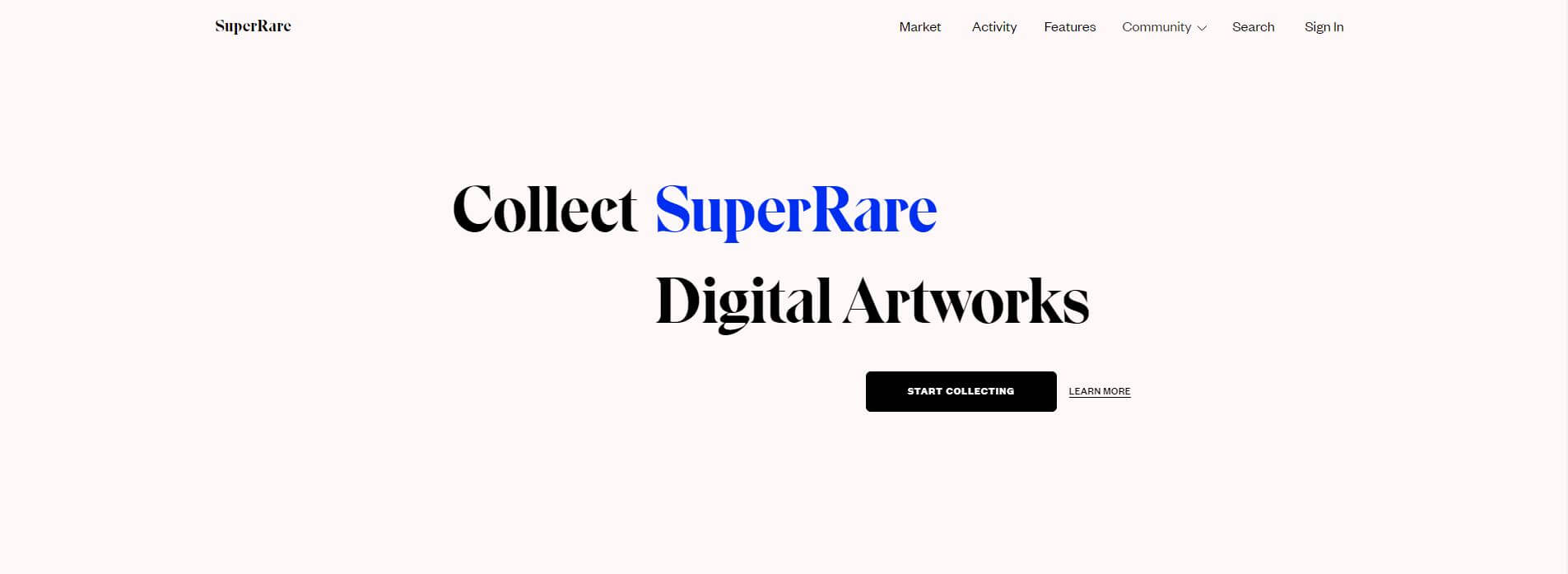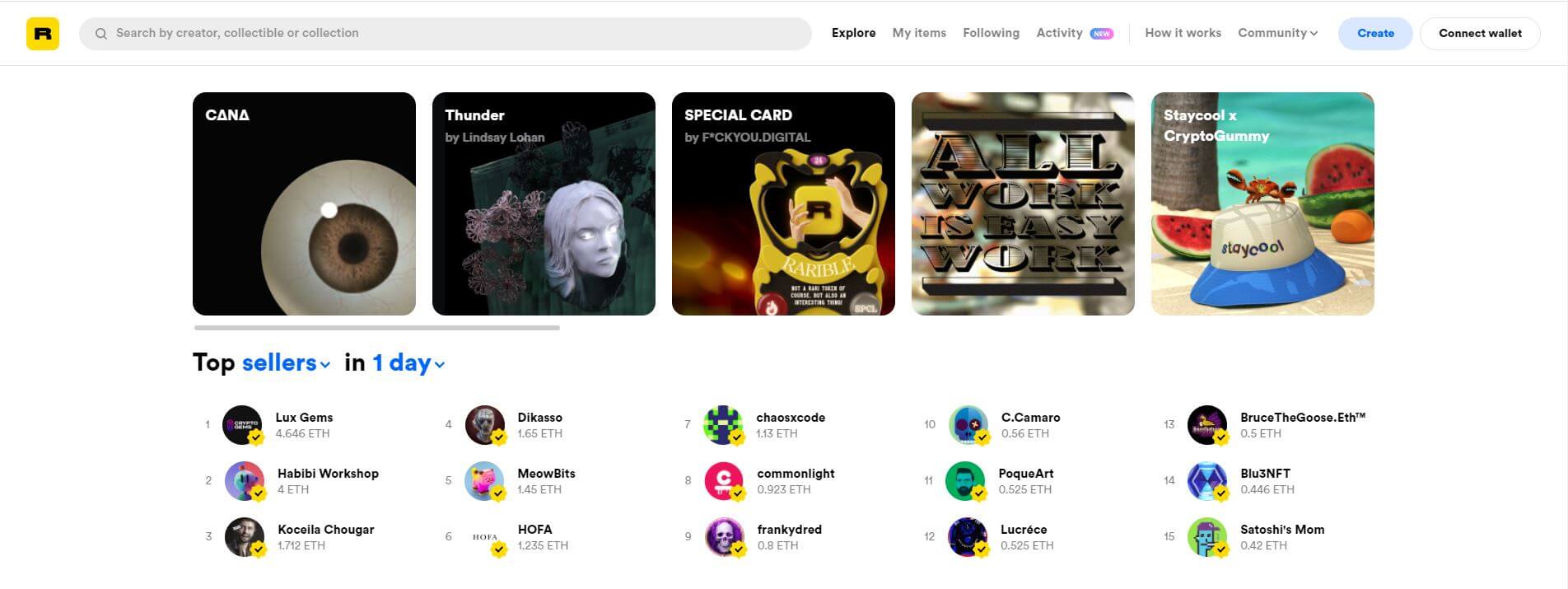If you are still struggling to understand how the blockchain operates and what it is, then you’re probably not so sure about what an NFT is either.
I mean it’s totally cool if you’re trying to learn these concepts just so you can be relevant too in the mainstream conversation, but besides being looked at as a tech guru, there are a couple of other advantages of knowing your way around NFTs. 👀
In this article we will discuss the advantages of having more than a basic idea of how an NFT works, by addressing the following questions:
What is an NFT? 🤔
NFT stands for non-fungible token, which is a unique digital asset that you cannot replace, much like an original Degas or Picasso. Or a rare baseball, or even Pokemon card. You got the idea.
Technically, it represents a unit of data that can only exist online. It comes with a proof of ownership stamped on the blockchain, which functions as a digital ledger, hence making it unique. Formally, an NFT is a kind of contract, smart contract in this case, that is put together via open-source code, using blockchain technology.
Although much of the current excitement is targeted towards cryptoart, it is safe to say that NFTs can really be anything digital.
But to make sense of this, let’s first circle back a bit and understand:
What is Blockchain how does it relate to NFTs?
Blockchain is a decentralized public network, an open market that does not comply to any governmental or private entity power, where both people and institutions can store and securely transfer information and currency in seconds.
An NFT is a unique token living on a blockchain. It can take many forms beyond simply images, video or other visual formats, but, in its essence, it is a container of authentic information. That information which the NFT stores is what makes it so unique.
Because they live on a blockchain, usually Ethereum, NFTs are easy to track. This tracking allows for verification of their authenticity as well as their history and owners.
Why would anyone create an NFT?
It all started back in 2017 when the team at Larva Labs released the first ever NFT and ERC-721 smart contract consisting of 10.000 images of CryptoPunks. Back then, each of these unique digital artworks could be purchased for as little as a few Ethereum pennies, as TechCrunch mentions.
Shortly after the launch, all these 10.000 unique characters were claimed by various crypto enthusiasts which today probably don’t regret that decision. Their value can go up to 7.5 million each.
Since the end of February of this year, the NFT market has seen explosive growth as a lot of artists are pivoting their work to the crypto environment.
An acquisition that you probably have heard of, spiking mainstream interest in NFTs was Beeple’s work which auctioned for no less than 69$ million to position him “among the top three most valuable living artists,”. Sports organizations have jumped on the bandwagon too, a good example being the NFT-based NBA Top Shots platform which surpassed the $230 million mark in sales.

Artists are also heavily adopting NFTs as it allows them to reach thousands of consumers worldwide directly to whom they can sell their craft in an authentic digital form. By-passing middle parties like auction houses or galleries means that artists get to keep a larger percentage of the profits from a sale.
To put this into further context, think about the free aspect of the internet and social media. – It democratizes access to an endless stream of art but decreases the value of the content out there.
This means that whatever type of art you’re putting your time into, as soon as you will put it on the internet will most likely be drastically depreciated in financial value, since people can download your work.
Having this scenario in mind, it quickly makes sense why more scarcity could be indeed helpful. That’s what creating an NFT would imply. Scarcity on something that, up until now, could be found in abundance.
Art enthusiasts will be willing to pay much more to have a particular connection to a piece of art or music, while the file will remain completely free and available. In that way, as Elinor Ostrom, a Nobel Prize-winning economist put it, “you kind of achieve the dream of the open internet, while also ensuring compensation for the producers.”
However, there’s a flipside to that. While some artists can create an NFT with $100 dollars and then sell it for $10.000, for example, some other artists, if not most of them, are actually losing money, because, although they forge a scarce item, there is no demand for it. Not that the quality of the work is superficial, but because that specific artist does not have a personal brand already established, is probably lacking some good PR, some rich friends or God knows what else he’s missing out on.
What makes NFTs unique?
As a digital token, an NFT is a type of cryptocurrency, much like Bitcoin or Ethereum. But unlike those two or any other coin existing on the blockchain, an NFT is unique and can’t be exchanged (hence the term, non-fungible).
Yes, just another fancy jargon type of word, but really not that strange as it sounds. Investopedia does a great job at explaining this term, saying that “fungibility of a good implies its ability to be exchanged with other goods of the same value.”
As a cryptographic asset on the blockchain, an NFT file stores extra information, which is why it is not just pure currency and can be pretty much anything, really.
To put it into context, NFTs are like any other physical collector’s item, but instead of having a picture to hang on your wall or a miniature statue to display it in your fancy furniture, you get a digital piece of art to add to your digital gallery.
Can you make a copy of an NFT?
As part of the Ethereum blockchain, NFTs are individual tokens containing extra information stored in them. That extra information is what makes these tokens take the form of crypto art like music, video, graphic design, in formats like JPGs MP3s, GIFs and many more. Because they hold value, they can be bought and sold just like other types of art – and, like with physical art, the value is largely set by the market and by demand.
Now here is where it gets a bit tricky..
Much as in the case of an original art print which often gets a lot of copies made, bought and sold, an NFT does not have only one digital version available in the marketplace. You will find copies of that seemingly unique NFT available on the blockchain, although they won’t hold the same value as the original.
Owning an NFT – weird flex or not?
There’s a common desire amongst people to own scare objects and develop an online portfolio to reflect personality traits, much like wearing certain clothes and owning certain objects.
Besides, as most people associate it to cryptocurrency, they tend to assume that owning an NFT has tremendous financial potential. “You definitely don’t want to miss out on this, man..”
Now that’s not necessarily wrong, but in order to actually make a profit out of an NFT, you either have to invest heavily, catch a fortunate timing and still invest heavily, or do some crazy stuff to skyrocket your personal brand overnight and make Banksy’s NFT look like a bargain.
I know some of y’all may be thinking “But that Beeple guy who no one knew anything about made 69$ million and I can’t?”
Uhmm..you probably can.. If you are at least as consistent as that guy, because, guess what? He’s been publishing a new digital artwork for the past 14 years eve-ry-day.
Let that sink in.
However, talking about value, you should know that there’s a difference between financial and hedonic value.
Not everyone is buying NFT’s just to flex their cryptocurrency wallet or benefit from reselling art like sneakers. Some are simply fans, people who genuinely support an artist, people who purchase such digital tokens to have a sort of intimate bond with the creator.
What NFT marketplaces are out there?
Obviously, as the popularity of NFTs is soaring, you can also expect the same upward trend in the case of the NFT marketplaces. This means that you can sell & purchase NFTs off a variety of platforms, but it really depends on the specific kind of token you got in mind, as not all marketplaces buy and sell all types of NFT.
No matter if you’re looking to buy or sell an NFT, you should know that different marketplaces support different NFT token standards. Until not long ago, most NFTs used to be part of the Ethereum blockchain as Ethereum has released two standards, specifically ERC-721 and ERC-1155. In time, though, other blockchains have started to emerge, facilitating NFTs, one example being Binance, which has also released two standards, BEP-721 and BEP-1155.
With that being said, here are some of the most popular NFT marketplaces:
- OpenSea – Offering a wide range of NFTs such as art, domain names, virtual worlds, trading cards, sports, collectibles and many more, OpenSea wants to live up to its promise of being the largest and most democratized NFT marketplace in the world, hence the name. To some creators, it might seem a bit more accessible, as anyone can mint essentially anything for free and have the cost of creating an NFT processed only after the token is purchased. Not so bad, right? On top of that, it features pieces from many other marketplaces, such as the ones featured below, as well as a bunch of cryptocurrencies besides ETH, like DAI, WHALE, or RARI.

SuperRare – A marketplace that specializes on selling unique, single-edition digital artworks. Besides positioning itself as an exclusive platform where some of the highest worth transactions are being made, SuperRare is also the pioneer of an eco-system that connects artists with collectors, having a social network component built on top of the marketplace. Due to its exclusive nature, it is fairly difficult to be accepted as an artist and also have your bid processed for a certain NFT. The platform operates with Ethereum’s network, so you’ll need to fund your account with ETH coins to make your purchase.

Rarible – One of the most popular marketplaces to emerge in 2020. It is particularly useful for creators, as the minting process does not imply a lengthy process or any off-putting requirements. Because of that, buyers are provided with a larger variety of tokens they could choose from. Besides, as opposed to super rare which rather focuses on single edition NFTs, on Rarible the tokens appear to be listed in multiple editions. It is a community-owned marketplace with a native coin called RARI, which is yet to be commonly used, as most of the transactions are still done through ETH.

Once you decide which platform you will be using to purchase your NFT, you’ll need a wallet specific to that platform and you’ll need to fill that wallet with cryptocurrency.
It is also worth mentioning that these crypto marketplaces all do share some similarities to Ebay, in the sense that people can either place bids for your NFT or directly buy it. Usually, NFTs with limited quantities are typically auctioned off and then resold. On the other side, other NFTs can just have set prices, being available for direct purchase.
Can anyone make an NFT?
Technically, yes.
Anyone can create work, turn it into an NFT on the Blockchain and put it up for sale on a marketplace of choice. You can even attach a commission to the file, which you will receive every time someone buys the piece – including resales.
Contrary to what you may believe, creating your own NFT does not imply any extensive knowledge of the crypto industry as it is rather a straightforward and intuitive process, especially with a lot of NFT marketplaces emerging to lure artists of all kinds.
But because it couldn’t just be simple all the way through, someone had to come up with a fancy verb for creating NFTs – minting.
Minting refers to the process of turning your digital token, no matter if it’s a GIF or a controversial tweet, as part of the Ethereum blockchain – a public ledger, specifically a record-keeping system that maintains participants’ identities in secure and anonymous form.
To put it briefly, think of it as the digital equivalent of minting metal coins prior to adding them into circulation. The same happens with your artwork, so that you can sell it or trade, but most importantly, track it digitally as it is highly likely that your NFT will be resold or collected again in the future.
But how do you mint an NFT exactly?
You will first have to decide whether you want to issue your NFT on the Ethereum Blockchain, or other less popular blockchains like Binance Smart Chain, Flow by Dapper Labs, Tron and many more which are starting to gain traction.
Let’s take the Ethereum blockchain, for example, since it has the largest NFT ecosystem.
In order to mint your own NFT on the Ethereum blockchain, you’ll need an Ethereum wallet that supports ERC-721, or any of the Ethereum-based NFT standards (as discussed above) and, of course, some budget, ideally between $50 to $100 in ether (ETH).
Once you have these, just look for an NFT-centric platforms that allows you to connect your wallet and upload your chosen image or file that you want to turn into an NFT.
Told you it’s way easier than it sounds. 😉
Developing an NFT Marketplace.
Now we have discussed about creating, selling, buying and reselling NFTs, which are all valid means of making profit. Still, there is one more that people seem to neglect, for some reason.
At RebelDot we are already working on a bunch of NFT digital products. Lately, we’ve been constantly contacted by startup founders looking to build NFT marketplaces.
It seems to us that more and more techies are sizing a profitable opportunity here, looking for technical partners to support their ideas from paper-sketched wireframes and all the way to fully functional products.
You can hop on our blog to read more about the crypto art marketplace projects that we’ve been working on.

Is this a long-term thing or just a bubble?
While many rush to conclude that this is just another bubble that has already started bursting, I tend to share philosopher’s Naval Ravikant opinion who claims that, although NFT art is where the current mainstream focus is, this new technology will ultimately authenticate the entire world, as public blockchains will be the title registries for everything of value.
Also, you might want to keep in mind that, (as it is usually the case with bubbles), the ones who will eventually benefit the most from the NFT hype won’t be the people who speculate, but rather the companies that will offer people the opportunity and the platform to speculate.
As James Surowiecki perfectly put it in his popular NFT article, “You can make money being a gambler. But in the long run, it’s much safer to be the house.”










